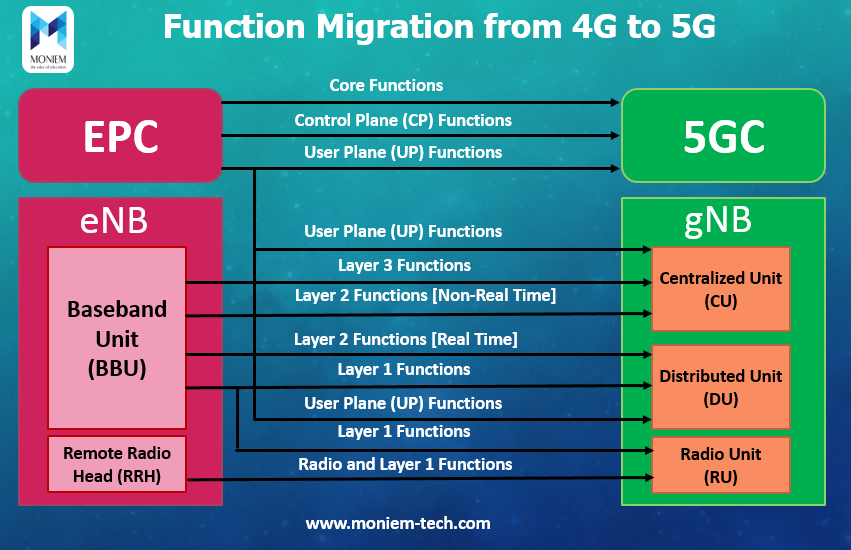5G shouldn’t be seen simply as the next generation of mobile communications. It’s a smart ecosystem that’s ready to catch new innovations and highly customized services.
4G to 5G Interworking
4G LTE and the 5G networks will continue to interwork for a number of years. This is why it’s essential to:
- Support a seamless handover between the EPC and 5G core networks.
- Maintain service continuity.
- Leverage the full potential of an agile and rapid 5G architecture.
Function Migration from 4G to 5G

4G RAN Network: In the 4G LTE network, the functions in the eNB are split as below:
- Baseband Unit (BBU).
- Remote Radio Head (RRH).
The BBU and RRH can be separated physically. This allows the RRH to be located closer to the antenna, while the BBU can be located more centrally. It effectively the deployment of LTE Cells.
5G RAN Network: Here the concept is going further by splitting the 4G LTE BBU equivalent into a Central Unit (CU) and a Distributed Unit (DU) and allowing packet-based networks to connect multiple DUs to a single CU.
But the question here is Why this additional SPlit?
The main benefit of this split is moving more data processing functions close to the edge, particularly real-time functions. Also, more intelligence at the edge enables the RAN to cope with the mobile growth, the billions of connections expected from IoT devices, and provide lower latency connections closer to the user.
Let’s see how the changes or migration happens
- Some 4G LTE Core User Plane (UP) functions are moved to the CU and DU.
- Layer 2 (L2) non-real-time and Layer 3 (L3) functions are moved from the BBU to the CU.
- Layer 2 (L2) real-time functions are moved to the DU.
- Layer 1 (L1) functions split between DU and RU.
Benefits of Functions Split
- This new architecture makes it possible to deploy CU and DU functions related to a specific service either centrally or at the edge close to the RU depending on the latency and backhaul BW requirements.
- Flexibility in meeting diverse service needs with the same RAN architecture.
- Reduce the space, power, and cooling challenges in data centers.
References:
- Road to 5G:Introduction and Migration, GSMA
- Comcores ApS White Paper
